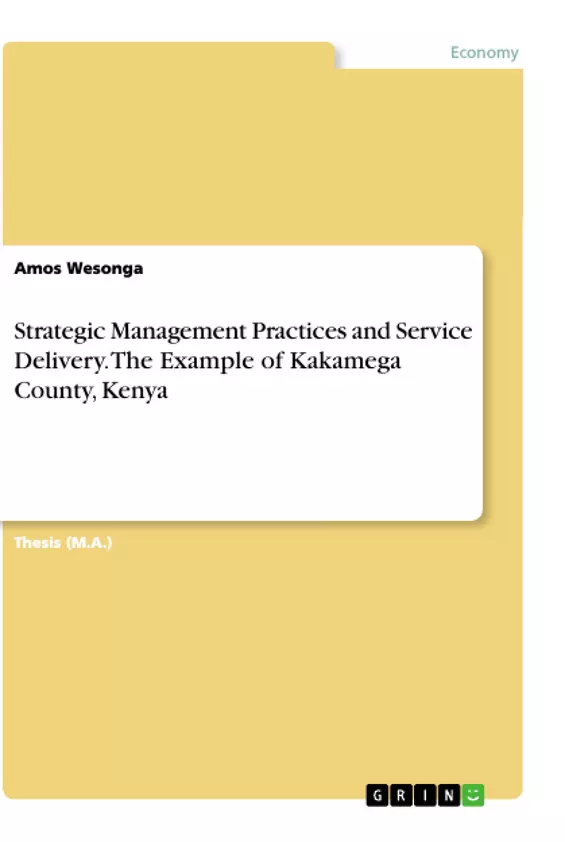This thesis assessed the effect of strategic management practices on service delivery in Kakamega County, Kenya. The specific objectives were to evaluate the effect of supplier management on service delivery in Kakamega County and to determine the effect of Human resource practices on service delivery in Kakamega County. Furthermore it was the aim to determine the moderating effect of environmental factors on the relationship between strategic management practices and service delivery in Kakamega County and to establish the effect of technology adoption on service delivery in Kakamega County.
Today, organisations, both public and private experience unprecedented paces of change, which call for continuous re-evaluation of their operating models and other strategies to withstand and benefit from them for sustained performance. New approaches that bring on board the modern strategic management techniques are necessary for the government to attain improved performance and the overall service quality. Strategic management has been touted to be an effective management tool in changing a bureaucratic public sector to a more responsive, as well as innovative administration.
Inhaltsverzeichnis (Table of Contents)
- CHAPTER ONE
- 1.0 Introduction
- 1.1. Background of the Study
- 1.2 Statement of the Problem
- 1.3 Objectives of the Study
- 1.3.1 General Objective
- 1.3.2 Specific Objectives
- 1.5 Significance of the Study
- 1.6 Scope of the Study
- 1.7 Limitations of the Study
- 1.8 Conceptual Framework
- CHAPTER TWO
- 2.0 Introduction
Zielsetzung und Themenschwerpunkte (Objectives and Key Themes)
This thesis investigates the impact of strategic management practices on service delivery within Kakamega County, Kenya. The study aims to understand how different strategic management techniques influence the effectiveness of service delivery, ultimately contributing to a more responsive and innovative public sector.
- The relationship between supplier management practices and service delivery in Kakamega County
- The impact of human resource practices on service delivery in Kakamega County
- The effect of technology adoption on service delivery in Kakamega County
- The moderating effect of environmental factors on the relationship between strategic management practices and service delivery
- The overall impact of strategic management practices on service delivery in Kakamega County
Zusammenfassung der Kapitel (Chapter Summaries)
Chapter One: Introduction This chapter provides a comprehensive overview of the research, outlining the background, problem statement, objectives, significance, scope, limitations, and conceptual framework. It sets the stage for the investigation into the relationship between strategic management practices and service delivery in Kakamega County.
Chapter Two: Literature Review This chapter delves into existing literature and research related to the study's central themes. It provides a theoretical foundation for understanding the concepts of strategic management, service delivery, and their interrelationship in the context of public sector organizations. The review examines relevant studies, theories, and frameworks to inform the research design and analysis.
Schlüsselwörter (Keywords)
This study focuses on key concepts such as strategic management practices, service delivery, public sector organizations, supplier relations management, human resource management, technology adoption, environmental factors, and the impact of these factors on organizational performance.
- Citar trabajo
- Dr. Amos Wesonga (Autor), 2018, Strategic Management Practices and Service Delivery. The Example of Kakamega County, Kenya, Múnich, GRIN Verlag, https://www.grin.com/document/999901



